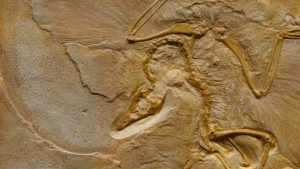
A new study has found that the history of dinosaurs may have been more complicated than previously thought. The study, which was published in the journal Science, looked at the fossil record of dinosaurs and found that they may have originated in the southern hemisphere. This is in contrast to the previous theory that they originated in the northern hemisphere.
The study looked at the distribution of dinosaur fossils around the world and found that the majority of them were found in the southern hemisphere. This led the researchers to believe that the dinosaurs may have originated in the southern hemisphere. The study also found that the dinosaurs may have been more widespread than previously thought.
The fossils of dinosaurs have been found on every continent, including Antarctica. This suggests that the dinosaurs were not limited to any one area of the world. The study provides new insights into the history of dinosaurs and their distribution around the world. It also shows that the dinosaurs were more widespread than previously thought.
If you are interested to know more about the History of dinosaurs, well you are in the right place. This blog will provide you with all the information that you need to know about dinosaurs.
Introduction
The history of dinosaurs is a long and fascinating one. They were the dominant terrestrial vertebrates for over 150 million years, from the late Triassic period until the end of the Cretaceous period.
Dinosaurs were a varied group of animals, with many different shapes and sizes. Some were herbivores, while others were carnivores. Some were fast and agile, while others were slow and sluggish.
But one thing that all dinosaurs had in common was that they were all incredibly fascinating creatures. The first dinosaurs appeared during the Triassic period, around 200 million years ago. These early dinosaurs were small and primitive, and they were not the dominant terrestrial vertebrates at this time.
The dominant terrestrial vertebrates during the Triassic period were the archosaurs, a group of reptiles that includes crocodiles, birds, and pterosaurs. The first dinosaurs were probably similar in size and appearance to the modern-day crocodiles.
During the Jurassic period, dinosaurs became the dominant terrestrial vertebrates. This was due to the fact that the archosaurs went extinct at the end of the Triassic period, leaving the dinosaurs as the only major group of terrestrial vertebrates.
The Jurassic period was also a time of great diversity for dinosaurs. Many new and different types of dinosaurs appeared during this time, including the massive sauropods, the ferocious theropods, and the winged pterosaurs. The Cretaceous period was the final period of the dinosaurs. This was the time when the massive asteroid impact occurred, which led to the mass extinction of the dinosaurs.
The asteroid impact was not the only factor that contributed to the extinction of the dinosaurs, but it was certainly the most important one. Other factors that may have played a role in the extinction of the dinosaurs include changes in the climate, volcanic activity, and the spread of disease. The history of dinosaurs is a long and fascinating one.
They were the dominant terrestrial vertebrates for over 150 million years, from the late Triassic period until the end of the Cretaceous period. Dinosaurs were a varied group of animals, with many different shapes and sizes. Some were herbivores, while others were carnivores. Some were fast and agile, while others were slow and sluggish. But one thing that all dinosaurs had in common was that they were all incredibly fascinating creatures.
The Dawn of the Dinosaurs
The history of dinosaurs is a long and complicated one. For many years, scientists thought that dinosaurs were nothing more than mythological creatures.
It wasn’t until the late 18th century that dinosaurs were finally recognized as real animals. The first scientific study of dinosaurs was conducted by French naturalist Georges Cuvier. In 1812, Cuvier published a paper describing some fossilized bones that he had found in southern France.
These bones were unlike any other known animal, and Cuvier concluded that they belonged to a previously unknown species of animal. Cuvier’s work was largely ignored by the scientific community, and it wasn’t until the early 19th century that dinosaurs began to be studied in earnest.
In 1824, British anatomist Richard Owen conducted a detailed study of dinosaur bones, and he was the first to use the term “dinosaur”. Owen realized that the fossils he was studying belonged to a distinct group of animals, which he named “Dinosauria”. Owen’s work sparked a renewed interest in dinosaurs, and soon scientists all over the world were conducting studies on these fascinating creatures.
In 1841, British geologist Sir Richard Owen published a paper describing the first complete dinosaur skeleton that had ever been found. This specimen, which came to be known as “Megalosaurus”, was an enormous creature, measuring over 30 feet in length.
The discovery of Megalosaurus led to a flurry of dinosaur discoveries, and by the end of the 19th century, over 50 different species of dinosaurs had been identified. The study of dinosaurs continued to grow in popularity in the 20th century, and today, dinosaurs are some of the most well-known and well-studied animals on the planet.
The Age of the Dinosaurs
The Age of the Dinosaurs is a period of time during which dinosaurs roamed the earth. This time period began approximately 245 million years ago and ended approximately 65 million years ago.
Dinosaurs were a very diverse group of reptiles. They ranged in size from the smallest, which was about the size of a chicken, to the largest, which was the size of a school bus. Some dinosaurs were plant-eaters, while others were meat-eaters.
During the Age of the Dinosaurs, the Earth’s climate was much warmer than it is today. This was due to a number of factors, including the earth’s position in relation to the sun and the composition of the atmosphere.
The warm climate meant that there was less land area covered in ice, which allowed dinosaurs to live in a wide range of locations. The Age of the Dinosaurs came to an end approximately 65 million years ago. This is when a large asteroid is thought to have struck the earth, causing a massive global extinction event.
While the exact causes of the asteroid impact are still being debated, it is clear that the event had a profound effect on the dinosaurs and the world as a whole.
The End of The Dinosaurs
The dinosaurs went extinct around 65 million years ago, give or take a few hundred thousand years.
There are a number of theories about why this happened, but the most likely explanation is that a comet, asteroid, or meteor hit the Earth, causing all dinosaurs to die. This event is known as the K-T event because it marks the end of the Cretaceous period and the beginning of the Tertiary period.
The Legacy of the Dinosaurs
The dinosaurs are a varied group of reptiles of the clade Dinosauria. They first appeared during the Triassic period, between 243 and 23
23 million years ago, although the exact origin and timing of the evolution of dinosaurs is the subject of active research. They became the dominant terrestrial vertebrates after the Triassic–Jurassic extinction event 203 million years ago; their dominance continued throughout the Jurassic and Cretaceous periods.
The fossil record demonstrates that birds are modern feathered dinosaurs, having evolved from earlier theropods during the Late Jurassic epoch. As such, birds were the only dinosaur lineage to survive the Cretaceous–Paleogene extinction event 6
5 million years ago. Dinosaurs can therefore be divided into avian dinosaurs or birds; and non-avian dinosaurs, which are all dinosaurs other than birds. This article deals primarily with non-avian dinosaurs.
At the beginning of the Mesozoic Era, there were many different kinds of archosaurs, the group of reptiles that includes the dinosaurs, flying reptiles called pterosaurs, and crocodiles. But by the end of the Mesozoic, most of these groups had died out, leaving the dinosaurs as the dominant land reptiles. Dinosaurs were a highly successful group of animals.
They lived on all continents and grew to large sizes. Some dinosaurs were herbivores, others carnivores. Some were bipeds, others quadrupeds. The study of dinosaurs is called paleontology. Paleontologists have been able to learn a great deal about dinosaurs by studying their fossils. Fossils are the remains of animals or plants that have been preserved in rock.
Most fossils are found in sedimentary rock, which is a rock that is formed from the accumulation of sediment, such as sand or mud. The process of fossilization is when an animal or plant is preserved in sedimentary rock. This can happen in a number of ways. The most common is when the remains are buried by sediment and then preserved.
Paleontologists have found many different kinds of dinosaur fossils. They have found bones, teeth, claws, eggs, and even skin impressions. From these fossils, paleontologists have been able to learn about the anatomy of dinosaurs. They have also been able to learn about the way dinosaurs lived. For example, paleontologists have found evidence that some dinosaurs lived in herds. They have also found evidence that some dinosaurs were carnivores and others were herbivores.
Paleontologists have also been able to study the environment in which dinosaurs lived. They have found fossils of plants that lived in the same time and place as dinosaurs. From all of this evidence, paleontologists have been able to piece together a picture of what the world was like when dinosaurs roamed the Earth.
Final Words
The history of dinosaurs is a long and complicated one, full of mystery and intrigue. Scientists are still learning new things about these amazing creatures every day, and there is still much to be discovered.
Dinosaurs have captured the imaginations of people for generations, and their story is one that is still being written.
Thank You for Visiting our website MHNRC.ORG. If you liked the article then share it with others.
Follow the MHNRC page on Facebook
Must Read Articles


